|
| Crew |
3 |
| Dimensions |
|---|
| Wing span, m |
18.4 |
| Length, m |
12.03 |
| Height, m |
3.1 |
| Powerplant |
|---|
| 2 × PE Argus-410А-1, hp |
465 |
| Weight, kg: |
|---|
| Empty weight |
3245 |
| Maximum takeoff weight |
4170 |
| Performance |
|---|
| Maximum speed, km/h |
350 |
| Time to 4000m, min |
8 |
| Service ceiling, m |
7300 |
| Service range, m |
670 |
| Armament |
|---|
| 2 × 7.92-mm machine guns in the wing, 2 × 2×7,92-mm machine guns in the tail, bombs, kg |
200 |
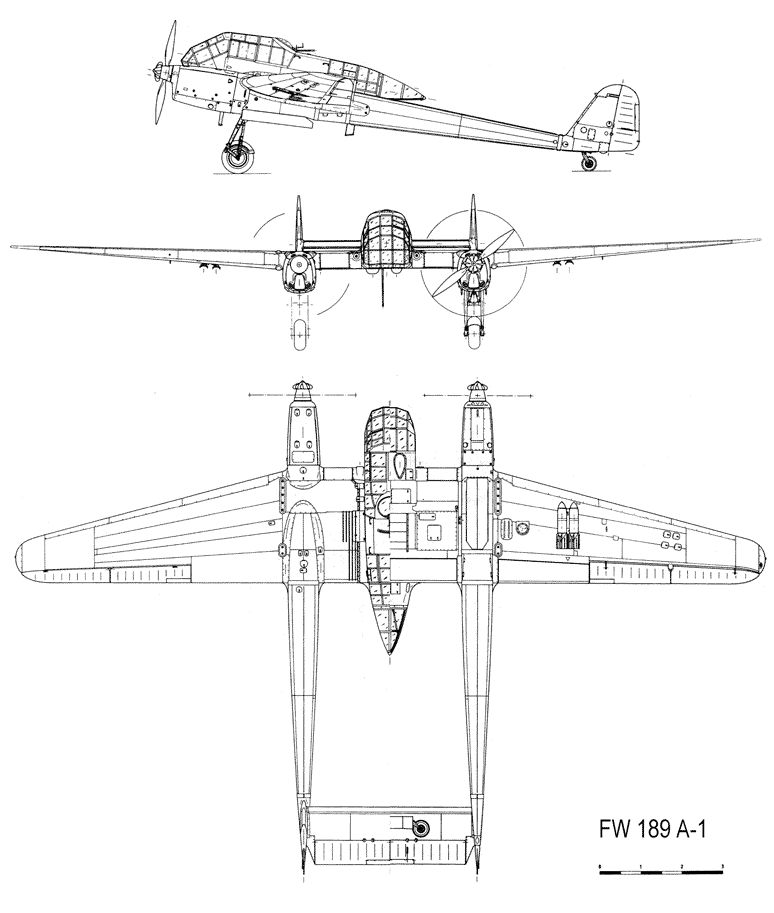 |
Drawing Fw 189 A-1
|
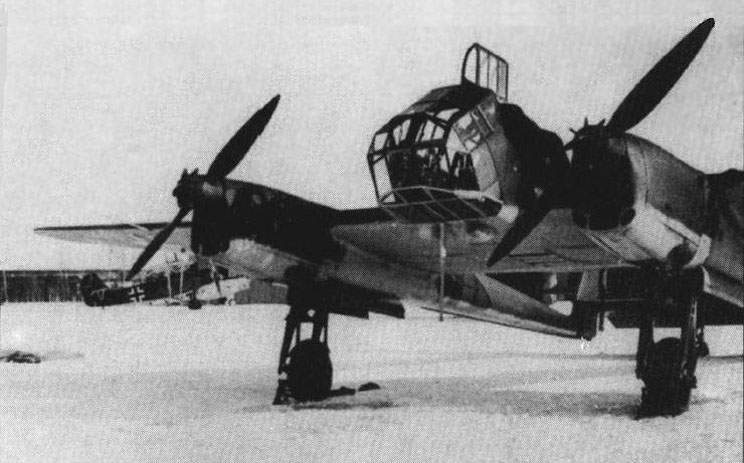 |
Fw 189
|
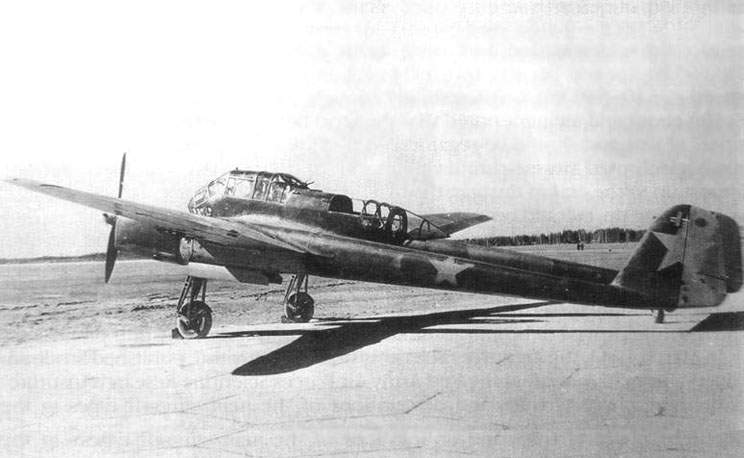 |
Fw 189A-2 on the hardstand at Chkalovskaya, 1943
|
Fw-189B "Uhu"
Training Aircraft

The second prototype Fw-189V-5 was built in a training version. The crew nacelle on this machine was completely redesigned to give the shape characteristic of "normal" aircraft with a protruding forward fuselage and a conventional cockpit canopy. The Fw-189V-5 was equipped with dual controls and could accommodate five people in its cockpit. The aircraft made its first flight in early 1939.
The Fw-189 mass production program was not considered a priority, and the factory was able to fully concentrate on the assembly of three pre-series Fw-189B-0 (W.Nr. 0008 "BQ + AX", W.Nr. 0009 "BQ + AY ", W.Nr. 0010 "BQ + AZ") and ten serial training aircraft Fw-189B-l. All pre-production and the first three production aircraft were built before the end of 1939, the seven remaining production aircraft were handed over in January-February 1940. After passing tests in Rechlin, all aircraft were transferred to combat units, where they were used not only for crew training, but also as liaison, transport, etc.

The instructor and cadet were seated shoulder to shoulder in the cockpit. The cockpit equipment corresponded to the equipment of a "normal" aircraft - a steering wheel with a column, pedals and an instrument panel in the traditional place below the cockpit canopy. Some of the instruments were not duplicated and were placed in the center of the dashboard, from where both the cadet and the instructor could read their readings. On the reconnaissance, a number of controls, in particular the gas sectors of the engines, were located to the left of the pilot, on the Fw-189B they were located on the central panel between the instructor and cadet seats. In the central part of the crew gondola, directly behind the pilots' seats, there were additional seats.
Glazing of the central part of the cabin was available only on the port side. The back of the gondola differed little in shape from the reconnaissance gondola, but was made of metal. On the upper part of the cockpit canopy, a stub radio antenna mast was mounted. The crew got inside the car through the sliding segment of the cockpit canopy. The landing gear differed little from similar devices of the first Fw-189 aircraft. The main landing gear wheels had small fenders to reduce mud splashing during taxiing and takeoff/landing from muddy airfields. The only difference is that the profile of the wing panels on the training machines was rectangular, on the reconnaissance aircraft it was semicircular. Training aircraft did not carry weapons.
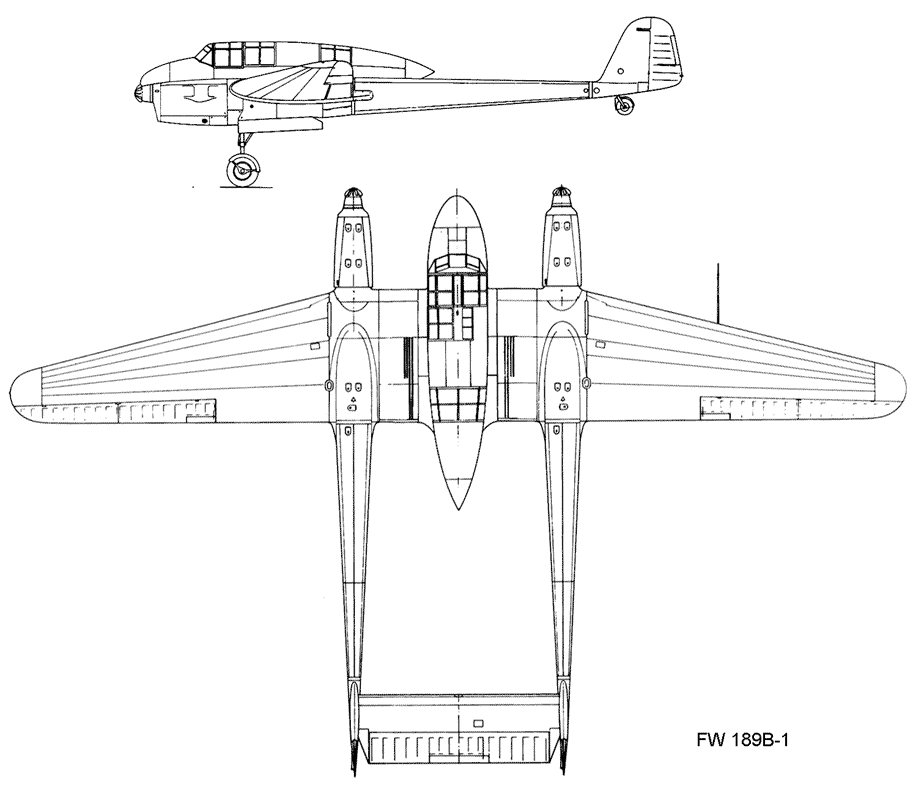
|
Drawing Fw.189 B-1
|
Fw-189C
Attack Aircraft
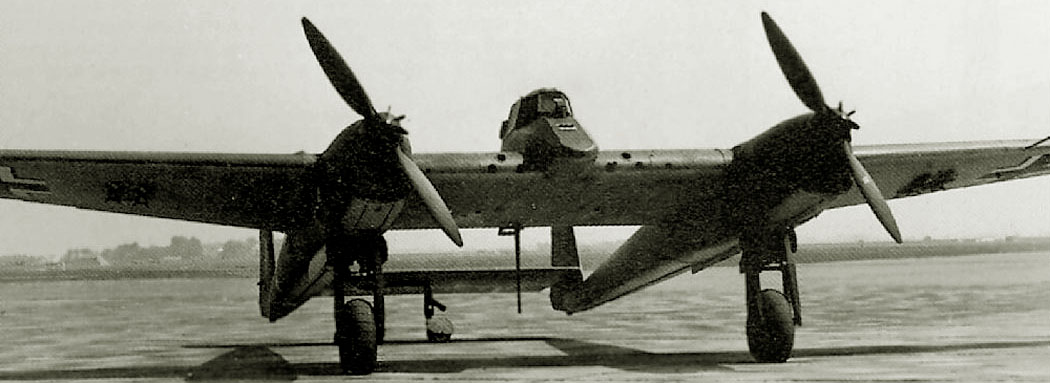
The conversion of the Fw 189V-1 reconnaissance aircraft into an attack aircraft consisted in replacing the central gondola with an armored cabin, which housed the pilot and air gunner. The attack aircraft received the designation Fw 189V-1b. The installation of offensive weapons on the Fw 189V-1b was not envisaged. Defensive armament consisted of one 7.92 mm MG15 machine gun. Aiming and review were carried out through the loophole in the armored cab. For the pilot, a forward view was provided by means of a small armored glass installed in front in a reclining lantern. In the spring of the 39th, the aircraft was handed over for testing.
The heavy armored cabin greatly worsened the flight performance and controllability of the vehicle. In addition, the crew demanded to improve visibility both forward and backward (during the tests, the shooter could not detect the fighter that hung on the tail of the attack aircraft). The area of the cockpit glazing was increased, and the gunner's loophole was replaced with an embrasure. The review went back to normal, although it remained insufficient.
After completion, the Fw 189V-1b was again submitted for testing, which took place together with the Hs.129V-2 and V-3. The results of the competition remained uncertain. Both aircraft demonstrated mediocre flight performance and handling. The case ended with the fact that during demonstration flights in Bremen, the pilot of the Fw 189V-1b crashed into the hangar while planning "blindly".
Nevertheless, the third aircraft of the second experimental series Fw 189V-6 was ordered from Focke-Wulf in the attack aircraft version - Fw.189C. More powerful As410A-l engines were installed on the attack aircraft, developing 465 hp on takeoff. The motors had variable pitch propellers instead of fixed pitch propellers on the first machines. In addition, changes were made to the design of the chassis and the center section. The center section now housed 2 MG-FF cannons of 20 mm caliber and 4 MG17 machine guns. The shooter had a pair of MG81 machine guns on a mobile mount.
When the Fw 189C entered the test center in Rechlin in September 1940, the first Henschel Hs 129A-0 pre-production attack aircraft was already undergoing military trials at 5.(Schlacht)/Staffel of the 2nd Fighter Squadron. Therefore, all work on the Fw 189C was stopped. However, work on the Hs 129A soon came to a virtual halt. The fact is that, under the impression of the success of the Ju 87 dive bomber in the Polish and French campaigns, the Luftwaffe leadership lost all interest in the armored attack aircraft program.
|
| Crew |
2 |
| Dimensions |
|---|
| Wing span, m |
18.40 |
| Wing area, m² |
18.40 |
| Length, m |
12.00 |
| Height, m |
3.10 |
| Powerplant |
|---|
| 2 × 12-cylinder Argus-410A-1, hp |
2 × 465 |
| Masses and loads, kg |
|---|
| Empty weight |
3,006 |
| Loaded weight |
4,024 |
| Gross weight |
4,258 |
| Performance |
|---|
| Maximum speed, km/h |
368 |
| Cruising speed, km/h |
317 |
| Service ceiling, m |
6,800 |
| Service range, km |
580 |
| Armament |
|---|
| 2 × 20 mm MG-FF cannons and 4 × MG17 machine guns, 2 × MG81 machine guns on a mobile mount |
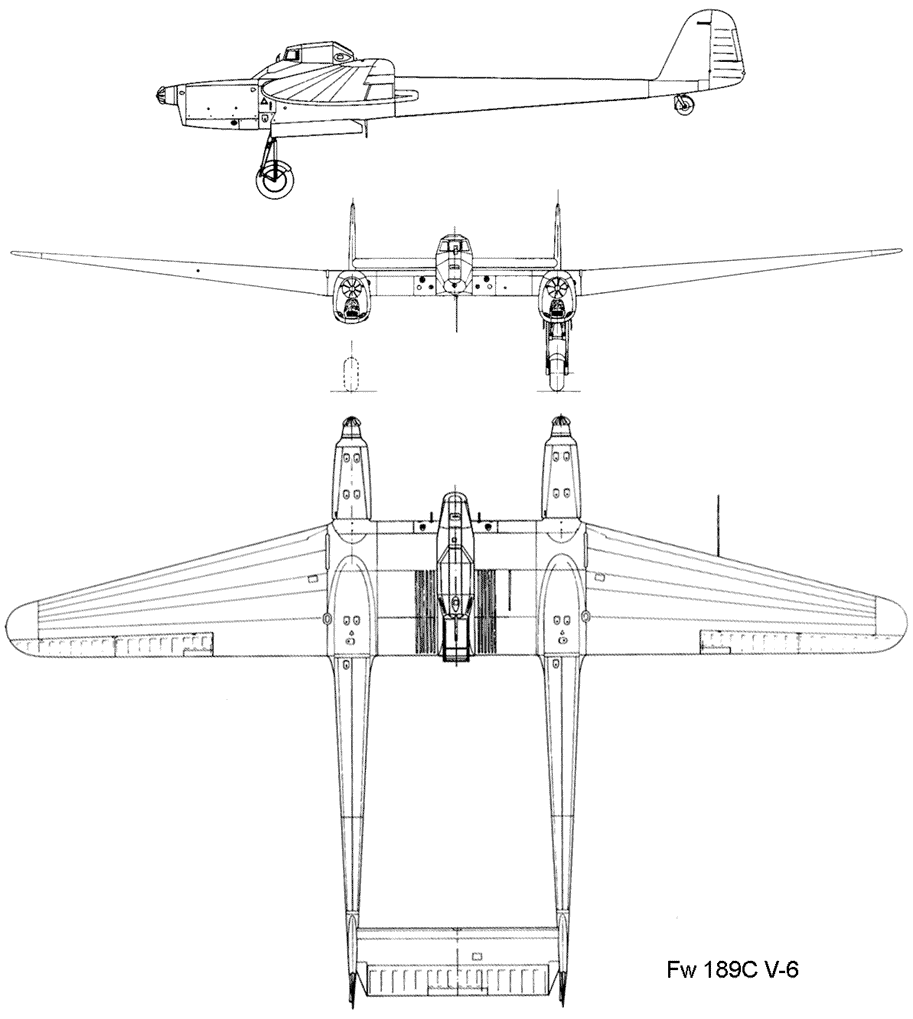
|
Drawing Fw.189C V-6
|
Bibliography

- "Aviation of Luftwaffe" /Viktor Shunkov/
- "The German Imprint on the History of Russian Aviation " /D.A. Sobolev, D.B. Khazanov/
- "Encyclopedia of military engineering" /Aerospace Publising/
- "Frontline Illustration" /# 6 2001/
|






